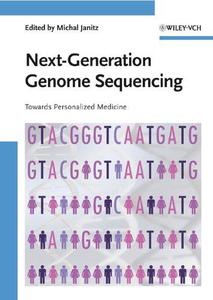
Next Generation Genome Sequencing: Towards Personalized Medicine By
2008 | 280 Pages | ISBN: 3527320903 | PDF | 8 MB
Written by leading experts from industry and academia, this first single comprehensive resource addresses recent developments in next generation DNA sequencing technology and their impact on genome research, drug discovery and health care. As such, it presents a detailed comparative analysis of commercially available platforms as well as insights into alternative, emerging sequencing techniques. In addition, the book not only covers the principles of DNA sequencing techniques but also social, ethical and commercial aspects, the concept of personalized medicine and a five-year perspective of DNA sequencing.Content: Chapter 1 Sanger DNA Sequencing (pages 1-11): Artem E. Men, Peter Wilson, Kirby Siemering and Susan ForrestChapter 2 Illumina Genome Analyzer II System (pages 13-28): Abizar Lakdawalla and Harper VansteenhouseChapter 3 Applied Biosystems SOLiD™ System: Ligation?Based Sequencing (pages 29-42): Vicki Pandey, Robert C. Nutter and Ellen PredigerChapter 4 The Next?Generation Genome Sequencing: 454/Roche GS FLX (pages 43-56): Lei Du and Michael EgholmChapter 5 Polony Sequencing: History, Technology, and Applications (pages 57-76): Jeremy S. EdwardsChapter 6 Next?Generation Sequence Data Analysis (pages 77-88): Leonard N. BloksbergChapter 7 DNASTAR's Next?Generation Software (pages 89-94): Tim Durfee and Thomas E. SchweiChapter 8 Real?Time DNA Sequencing (pages 95-101): Susan H. HardinChapter 9 Direct Sequencing by TEM of Z?Substituted DNA Molecules (pages 103-116): William K. Thomas and William GloverChapter 10 A Single DNA Molecule Barcoding Method with Applications in DNA Mapping and Molecular HaDescriptionyping (pages 117-132): Ming Xiao and Pui?Yan KwokChapter 11 Optical Sequencing: Acquisition from Mapped Single?Molecule Templates (pages 133-151): Shiguo Zhou, Louise Pape and David C. SchwartzChapter 12 Microchip?Based Sanger Sequencing of DNA (pages 153-163): Ryan E. Forster, Christopher P. Fredlake and Annelise E. BarronChapter 13 Multiplex Sequencing of Paired End Ditags for Transcriptome and Genome Analysis (pages 165-182): Chia?Lin Wei and Yijun RuanChapter 14 Paleogenomics Using the 454 Sequencing Platform (pages 183-199): M. Thomas P. GilbertChapter 15 ChIP?Seq: Mapping of Protein-DNA Interactions (pages 201-215): Anthony Peter Fejes and Steven J. M. JonesChapter 16 MicroRNA Discovery and Expression Profiling using Next?Generation Sequencing (pages 217-228): Eugene Berezikov and Edwin CuppenChapter 17 DeepSAGE: Tag?Based Transcriptome Analysis Beyond Microarrays (pages 229-244): Kare L. Nielsen, Annabeth H. Petersen and Jeppe EmmersenChapter 18 The New Genomics and Personal Genome Information: Ethical Issues (pages 245-254): Jeantine E. Lunshof
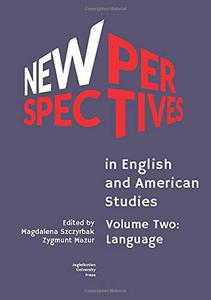
New Perspectives in English and American Studies - Volume Two: Language
by Magdalena Szczyrbak
English | 2022 | ISBN: 8323346879 | 267 Pages | PDF | 4 MB
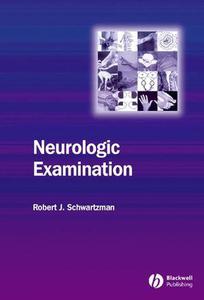
Neurologic Examination By
2006 | 280 Pages | ISBN: 1405130296 | PDF | 5 MB
Neurologic Examination is the ideal text for any neurologist learning the difficult art of diagnosis. This illustrated guide to all aspects of the neurological exam:Reemphasizes the usefulness of the exam in localizing lesions in the central and peripheral nervous system from which differential diagnoses are derivedDemonstrates the examination of the brachial plexus, cervical plexus, chronic regional pain patients is demonstrated - not found in other manuals of neurological examinationReintroduces the use of drifts, the arm roll and parietal copy to clinical neurology.Content: Chapter 1 The History (pages 1-10): Chapter 2 Mental Status (pages 11-15): Chapter 3 Cranial Nerves (pages 16-75): Chapter 4 The Motor System (pages 76-126): Chapter 5 Posture, Stance and Spinal Movement (pages 127-135): Chapter 6 Involuntary Movements (pages 136-152): Chapter 7 Basic Principles for the Sensory Examination (pages 153-167): Chapter 8 Common Patterns of Abnormal Sensation (pages 168-188): Chapter 9 The Motor Sensory Links (pages 189-206): Chapter 10 Coordination (pages 207-214): Chapter 11 Disorders of Speech (pages 215-224): Chapter 12 Apraxias (pages 225-228): Chapter 13 Agnosia (pages 229-234): Chapter 14 The Unconscious Patient (pages 235-253): Chapter 15 The Autonomic Nervous System (pages 254-260):

Nature Inside: A biophilic design guide by William D. Browning, Catherine O. Ryan
English | September 1, 2020 | ISBN: 1859469035 | 351 pages | PDF | 23 Mb
Written by a leading proponent of biophilic design, this is the only practical guide to biophilic design principles for interior designers. Describing the key benefits, principles and processes of biophilic design, Nature Inside illustrates the implementation of biophilic design in interior design practice, across a range of international case studies - at different scales, and different typologies. Starting with the principles of biophilic design, and the principles and processes in practice, the book then showcases a variety of interior spaces - residential, retail, workplace, hospitality, education, healthcare and manufacturing. The final chapter looks 'outside the walls', giving a case study at the campus and city scale. With practical guidance and real-world solutions that can be directly-applied in day-to-day practice, this is a must-have for designers interested in applying biophilic principles.

. Iao131, "Naturalistic Occultism: An Introduction to Scientific Illuminism"
English | ISBN: 1105589064 | 2012 | 158 pages | PDF | 13 MB
Naturalistic Occultism: An Introduction to Scientific Illuminism is an attempt to introduce the approach of Scientific Illuminism to occultism. It is in line with the motto of Scientific Illuminism, "The Method of Science, the Aim of Religion." Naturalistic Occultism approaches the theory and practice of occultism in a way that is scientific (using the scientific method and being up-to-date in current scientific knowledge), naturalistic (not supernatural), and pragmatic (whatever works is provisionally 'true'). This book represents an honest attempt to separate the gold of the practice of magick from the dross of superstition and dogma.
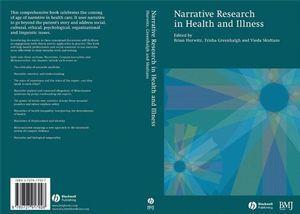
Narrative Research in Health and Illness By
2004 | 466 Pages | ISBN: 0727917927 | PDF | 4 MB
This comprehensive book celebrates the coming of age of narrative in health care. It uses narrative to go beyond the patient's story and address social, cultural, ethical, psychological, organizational and linguistic issues.This book has been written to help health professionals and social scientists to use narrative more effectively in their everyday work and writing.The book is split into three, comprehensive sections; Narratives, Counter-narratives and Meta-narratives.Content: Chapter 1 The Ethicality of Narrative Medicine (pages 21-36): Rita CharonChapter 2 Soldiers Become Casualties: Doctors' Accounts of the Sars Epidemic (pages 37-51): Eugene Wu, Frances Rapport, Kip Jones and Trisha GreenhalghChapter 3 Poems from the Heart: Living with Heart Failure (pages 52-72): Marilyn Kendall and Scott MurrayChapter 4 Performance Narratives in the Clinical World (pages 73-94): Cheryl MattinglyChapter 5 "I cut because it helps": Narratives of Self?Injury in Teenage Girls (pages 95-114): Petra M Boynton and Annabelle AuerbachChapter 6 The DIPEx Project: Collecting Personal Experiences of Illness and Health Care (pages 115-131): Andrew Herxheimer and Sue ZieblandChapter 7 Narratives of Spirituality and Religion in End?of?Life Care (pages 132-145): Arthur W FrankChapter 8 The Death of the Narrator (pages 146-155): Catherine BellingChapter 9 Narrative, Emotion, and Understanding (pages 156-167): Peter GoldieChapter 10 The Voice of Experience and the Voice of the Expert ? Can they Speak to each Other? (pages 168-186): Yiannis GabrielChapter 11 Wounded or Warrior? Stories of Being or Becoming Deaf (pages 187-204): Lesley Jones and Robin BuntonChapter 12 Narrative Analysis and Contested Allegations of Munchausen Syndrome by Proxy (pages 205-222): Clive BaldwinChapter 13 Confounding the Experts: The Vindication of Parental Testimony in Shaken Baby Syndrome (pages 223-238): James Le FanuChapter 14 Narratives of Compound Loss: Parents' Stories from the Organ Retention Scandal (pages 239-256): Ruth RichardsonChapter 15 The Power of Stories Over Statistics: Lessons from Neonatal Jaundice and Infant Airplane Safety (pages 257-276): Thomas B NewmanChapter 16 Narratives of Health Inequality: Interpreting the Determinants of Health (pages 277-291): Gareth WilliamsChapter 17 Narratives of Displacement and Identity (pages 292-308): Vieda SkultansChapter 18 A Thrice?Told Tale: New Readings of an Old Story (pages 309-324): Catherine Kohler RiessmanChapter 19 The Role of Stories and Storytelling in Organisational Change Efforts: A Field Study of an Emerging "community of practice" within the UK National Health Service (pages 325-348): Paul BateChapter 20 Meta?Narrative Mapping: A New Approach to the Systematic Review of Complex Evidence (pages 349-381): Trisha GreenhalghChapter 21 How Narratives Work in Psychiatric Science: An Example from the Biological Psychiatry of PTSD (pages 382-396): Allan YoungChapter 22 Storying Policy: Constructions of Risk in Proposals to Reform UK Mental Health Legislation (pages 397-413): David J HarperChapter 23 The Temporal Construction of Medical Narratives (pages 414-427): Brian Hurwitz
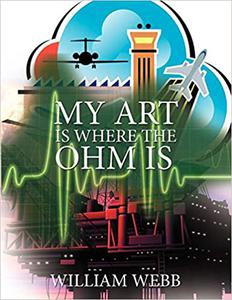
William Webb, "My Art Is Where the Ohm Is"
English | ISBN: 1438943970 | 2009 | 424 pages | AZW3 | 4 MB
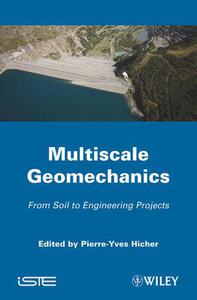
Multiscale Geomechanics By
2011 | 405 Pages | ISBN: 1848212461 | PDF | 14 MB
This book addresses the latest issues in multiscale geomechanics. Written by leading experts in the field as a tribute to Jean Biarez (1927-2006), it can be of great use and interest to researchers and engineers alike. A brief introduction describes how a major school of soil mechanics came into being through the exemplary teaching by one man. Biarez's life-long work consisted of explaining the elementary mechanisms governing soil constituents in order to enhance understanding of the underlying scientific laws which control the behavior of constructible sites and to incorporate these scientific advancements into engineering practices. He innovated a multiscale approach of passing from the discontinuous medium formed by individual grains to an equivalent continuous medium. The first part of the book examines the behavior of soils at the level of their different constituents and at the level of their interaction. Behavior is then treated at the scale of the soil sample. The second part deals with soil mechanics from the vantage point of the construction project. It highlights Biarez's insightful adoption of the Finite Element Codes and illustrates, through numerous construction examples, his methodology and approach based on the general framework he constructed for soil behavior, constantly enriched by comparing in situ measurements with calculated responses of geostructures.Content: Chapter 1 Jean Biarez (pages 1-14): Jean?Louis Bordes, Jean?Louis Favre and Daniel GrimmChapter 2 From Particle to Material Behavior (pages 15-34): Bernard Cambou and Cecile Nouguier?LehonChapter 3 Granular Materials in Civil Engineering (pages 35-82): Etienne FrossardChapter 4 Waste Rock Behavior at High Pressures (pages 83-112): Edgar Bard, Maria Eugenia Anabalon and Jose CampanaChapter 5 Models by Jean Biarez for the Behavior of Clean Sands and Remolded Clays at Large Strains (pages 113-152): Jean?Louis Favre and Mahdia HattabChapter 6 The Concept of Effective Stress in Unsaturated Soils (pages 153-182): Said Taibi, Jean?Marie Fleureau, Sigit Hadiwardoyo, Hanene Souli and Antonio Gomes CorreiaChapter 7 A Microstructural Model for Soils and Granular Materials (pages 183-220): Pierre?Yves HicherChapter 8 Modeling Landslides with a Material Instability Criterion (pages 221-242): Florent Prunier, Sylvain Lignon, Farid Laouafa and Felix DarveChapter 9 Numerical Modeling (pages 243-332): Arezou Modaressi?Farahmand?RazaviChapter 10 Evaluating Seismic Stability of Embankment Dams (pages 333-392): Jean?Jacques Fry
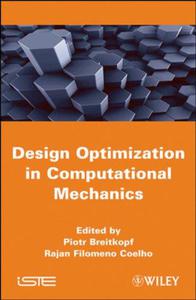
Multidisciplinary Design Optimization in Computational Mechanics By
2010 | 561 Pages | ISBN: 1848211384 | PDF | 31 MB
This book provides a comprehensive introduction to the mathematical and algorithmic methods for the Multidisciplinary Design Optimization (MDO) of complex mechanical systems such as aircraft or car engines. We have focused on the presentation of strategies efficiently and economically managing the different levels of complexity in coupled disciplines (e.g. structure, fluid, thermal, acoustics, etc.), ranging from Reduced Order Models (ROM) to full-scale Finite Element (FE) or Finite Volume (FV) simulations. Particular focus is given to the uncertainty quantification and its impact on the robustness of the optimal designs. A large collection of examples from academia, software editing and industry should also help the reader to develop a practical insight on MDO methods.Content: Chapter 1 Multilevel Multidisciplinary Optimization in Airplane Design (pages 1-16): Michel RavacholChapter 2 Response Surface Methodology and Reduced Order Models (pages 17-64): Manuel SamuelidesChapter 3 PDE Metamodeling Using Principal Component Analysis (pages 65-117): Florian De VuystChapter 4 Reduced?Order Models for Coupled Problems (pages 119-197): Rajan Filomeno Coelho, Manyu Xiao, Piotr Breitkopf, Catherine Knopf?Lenoir, Pierre Villon and Maryan SidorkiewiczChapter 5 Multilevel Modeling (pages 199-263): Pierre?Alain Boucard, Sandrine Buytet, Bruno Soulier, Praveen Chandrashekarappa and Regis DuvigneauChapter 6 Multiparameter Shape Optimization (pages 265-285): Abderrahmane Benzaoui and Regis DuvigneauChapter 7 Two?Discipline Optimization (pages 287-319): Jean?Antoine DesideriChapter 8 Collaborative Optimization (pages 321-367): Yogesh Parte, Didier Auroux, Joel Clement, Mohamed Masmoudi and Jean HermetzChapter 9 An Empirical Study of the Use of Confidence Levels in RBDO with Monte?Carlo Simulations (pages 369-404): Daniel Salazar Aponte, Rodolphe Le Riche, Gilles Pujol and Xavier BayChapter 10 Uncertainty Quantification for Robust Design (pages 405-424): Regis Duvigneau, Massimiliano Martinelli and Praveen ChandrashekarappaChapter 11 Reliability?based Design Optimization (RBDO) (pages 425-458): Ghias Kharmanda, Abedelkhalak El Hami and Eduardo Souza De CursiChapter 12 Multidisciplinary Optimization in the Design of Future Space Launchers (pages 459-468): Guillaume Collange, Nathalie Delattre, Nikolaus Hansen, Isabelle Quinquis and Marc SchoenauerChapter 13 Industrial Applications of Design Optimization Tools in the Automotive Industry (pages 469-498): Jean?Jacques Maisonneuve, Fabian Pecot, Antoine Pages and Maryan SidorkiewiczChapter 14 Object?Oriented Programming of Optimizers - Examples in Scilab (pages 499-538): Yann Collette, Nikolaus Hansen, Gilles Pujol, Daniel Salazar Aponte and Rodolphe Le Riche
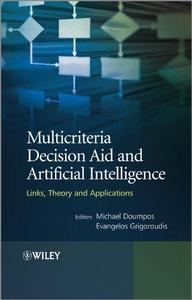
Multicriteria Decision Aid and Artificial Intelligence By
2013 | 353 Pages | ISBN: 1119976391 | PDF | 3 MB
Presents recent advances in both models and systems for intelligent decision making.Organisations often face complex decisions requiring the assessment of large amounts of data. In recent years Multicriteria Decision Aid (MCDA) and Artificial Intelligence (AI) techniques have been applied with considerable success to support decision making in a wide range of complex real-world problems.The integration of MCDA and AI provides new capabilities relating to the structuring of complex decision problems in static and distributed environments. These include the handling of massive data sets, the modelling of ill-structured information, the construction of advanced decision models, and the development of efficient computational optimization algorithms for problem solving. This book covers a rich set of topics, including intelligent decision support technologies, data mining models for decision making, evidential reasoning, evolutionary multiobjective optimization, fuzzy modelling, as well as applications in management and engineering.Multicriteria Decision Aid and Artificial Intelligence:Covers all of the recent advances in intelligent decision making.Includes a presentation of hybrid models and algorithms for preference modelling and optimisation problems.Provides illustrations of new intelligent technologies and architectures for decision making in static and distributed environments.Explores the general topics on preference modelling and learning, along with the coverage of the main techniques and methodologies and applications. Is written by experts in the field. This book provides an excellent reference tool for the increasing number of researchers and practitioners interested in the integration of MCDA and AI for the development of effective hybrid decision support methodologies and systems. Academics and post-graduate students in the fields of operational research, artificial intelligence and management science or decision analysis will also find this book beneficial.Content: Chapter 1 Computational Intelligence Techniques for Multicriteria Decision Aiding: An Overview (pages 1-23): Michael Doumpos and Constantin ZopounidisChapter 2 Intelligent Decision Support Systems (pages 25-44): Gloria Phillips?WrenChapter 3 Designing Distributed Multi?Criteria Decision Support Systems for Complex and Uncertain Situations (pages 45-76): Tina Comes, Niek Wijngaards and Frank SchultmannChapter 4 Preference Representation with Ontologies (pages 77-99): Aida Valls, Antonio Moreno and Joan BorrasChapter 5 Neural Networks in Multicriteria Decision Support (pages 101-126): Thomas HanneChapter 6 Rule?Based Approach to Multicriteria Ranking (pages 127-160): Marcin Szela?g, Salvatore Greco and Roman SlowinskiChapter 7 About the Application of Evidence Theory in Multicriteria Decision Aid (pages 161-187): Mohamed Ayman Boujelben and Yves De SmetChapter 8 Interactive Approaches Applied to Multiobjective Evolutionary Algorithms (pages 189-207): Antonio Lopez Jaimes and Carlos A. Coello CoelloChapter 9 Generalized Data Envelopment Analysis and Computational Intelligence in Multiple Criteria Decision Making (pages 209-233): Yeboon Yun and Hirotaka NakayamaChapter 10 Fuzzy Multiobjective Optimization (pages 235-271): Masatoshi SakawaChapter 11 Multiple Criteria Decision Aid and Agents: Supporting Effective Resource Federation in Virtual Organizations (pages 273-284): Pavlos Delias and Nikolaos MatsatsinisChapter 12 Fuzzy Analytic Hierarchy Process Using Type?2 Fuzzy Sets: An Application to Warehouse Location Selection (pages 285-308): Irem Ucal Sary, Basar Oztaysi and Cengiz KahramanChapter 13 Applying Genetic Algorithms to Optimize Energy Efficiency in Buildings (pages 309-333): Christina Diakaki and Evangelos GrigoroudisChapter 14 Nature?Inspired Intelligence for Pareto Optimality Analysis in Portfolio Optimization (pages 335-345): Vassilios Vassiliadis and Georgios Dounias


